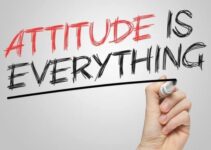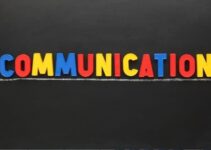Purpose and Process of Reading
Before actually beginning to read, it is important to know the purpose of reading, that is, why the reading is being done. Knowing the purpose greatly enhances the effectiveness of the reading. Also, knowledge of the purpose can help one adopt a style of reading best suited for the purpose.
Purpose of Reading
Some of the reasons why people usually read:
- Pleasure and enjoyment
- Practical application
- To obtain an overview
- To locale-specific information
- To identify the central idea or theme
- To develop a detailed and critical understanding
1. Pleasure and Enjoyment
This is probably the best reason to read anything. You have chosen the material for the purpose of enjoying yourself. Reading entertains you, even relaxes you. However, this will rarely be the purpose behind the reading one needs to do for academic purposes.
2. Practical Application
Here the purpose is to gain information that you can apply or use in a practical situation. Books such as laboratory manuals, computer manuals, instruction booklets, and recipe books are all texts that you would consult with the purpose of gaining specific information.
3. To Get an Overview
The point here is to get a general feel for the material, to determine whether it is relevant, useful, up·to-date, and to get a sense of how the topic is treated by the author. This is likely to be the main purpose behind your reading when:
• You are given an extensive reading list for an assignment.
• You are doing initial library research for an essay, tutorial, research report or similar assignments.
• You need to decide which texts are most relevant or useful for your assignment.
4. To Locate Specific Information
Sometimes you know what you are looking for but do not know exactly where to find it. For example, you might be looking for any of the following:
- A specific quotation
- Evidence to support a particular argument
- Details about a specific person or event
- A map
- A diagram
- A statistic or table of statistics
To find this sort of information might mean that you have to consult several books or sources. In these circumstances, you will be reading with the aim of zeroing in on the information you are looking for.
5. To Identify The Central Idea Of the Theme
The purpose here is to extract the essence of what the written material is trying to convey. For example, you might want to identify the major finding in an experimental article in a journal, or the core issue of a discussion paper.
6. To Develop a Detailed and Critical Understanding
On many occasions, you will need to masterfully the material in a book, journal article, or manual so that you can evaluate its arguments, perspective, and/or evidence. This will require you to:
- Read the material thoroughly.
- Make effective and relevant notes.
- Keep an open mind by being aware of your own ideas and opinions regarding the issues involved.
Process of Reading
One of the popular methods of reading is known as the SQ3R (Survey, Question, Read, Recall, Review) method. It involves the following steps:
1. Survey
This is, in fact, a pre-reading step where you survey the material prior to your actual reading by scanning the title, headings, and any summaries or abstracts. Before you actually begin reading the material, skim the entire reading material. Understand the organization of the reading material by going through the title page, table of contents, preface, appendix, bibliography, and so on.
Next, survey each chapter, that is, go through the chapter objectives, chapter summary, headings, and subheadings. Also go through the illustrations, tables, graphs, charts, and so on. All this will help in getting an idea about what the author is trying to convey.
2. Question
Before reading, put down specific questions you would like to have answers to. This not only clarifies your purpose of reading but also helps you focus and remember what you have read. Turn headings given in chapters into questions. The five cardinal questions-who, why, what, where and how-need to be answered.
While reading, think of these questions as this will help you concentrate on reading. At the end of the reading, again think of these questions to get an idea of how successfully they have been answered. Use the same questions during revision to help you remember what you have read.
Be an active reader. Question the author’s thoughts and ideas. Read critically and do not passively accept what the writer is presenting in the text. A questioning attitude also facilitates learning.
Three Stages in Reading:
The first is the information that is being presented on the page for all to read. This stage is called literal recognition because it just involves drawing literal meaning from the words of the writer.
The second stage is reading between the lines, that is, inferring what the author is trying to convey through the text. This is called interpretative recognition. It involves understanding what the writer means, that is, the writer’s interpretation of the text.
The final stage is going beyond the text and generating new and creative thoughts based on the reader’s previous knowledge, learning, and experience. This is called connective recognition. It results in generating new ideas, solutions, looking at things with a new perspective or a change of views. Try to move to this final stage while reading so as to actually benefit from the reading.
1. Read
Read the material twice. Read the first time without making notes. Also, compare the diagrams and illustrations with the written text. Re-read ports that are not clear. This may reduce your speed of reading a bit though. On your second reading, start to take notes, look for important details, supporting evidence, and examples.
2. Recall
Try to recall what you have read by closing the book and making notes of what you remember of the book. Recalling will help the reader to commit them to long-term memory. You must recall at regular intervals to check your understanding of the material.
3. Review
Check to see that you have answered all the questions you wrote down at the beginning. Note down any other point that you think is important.







